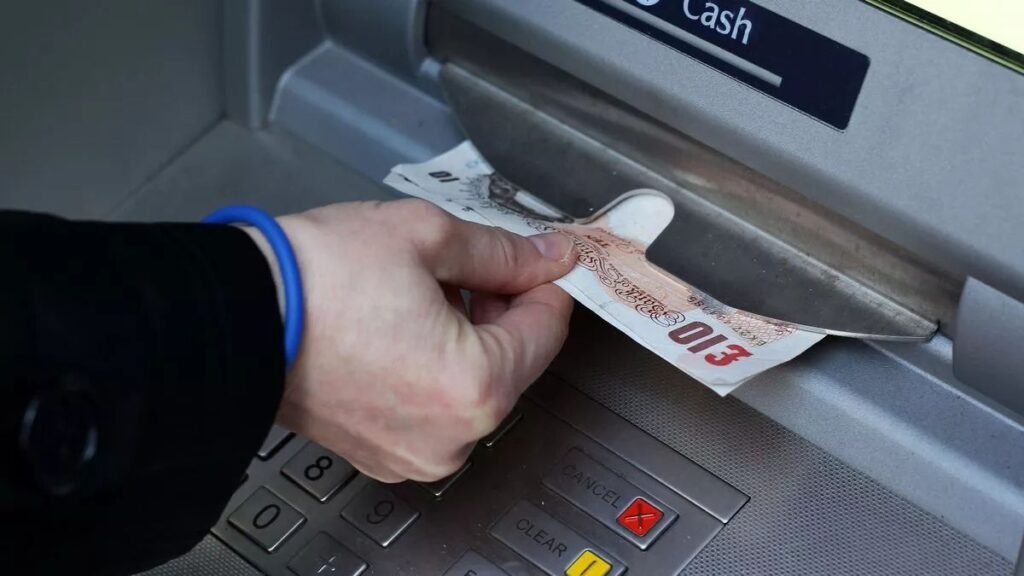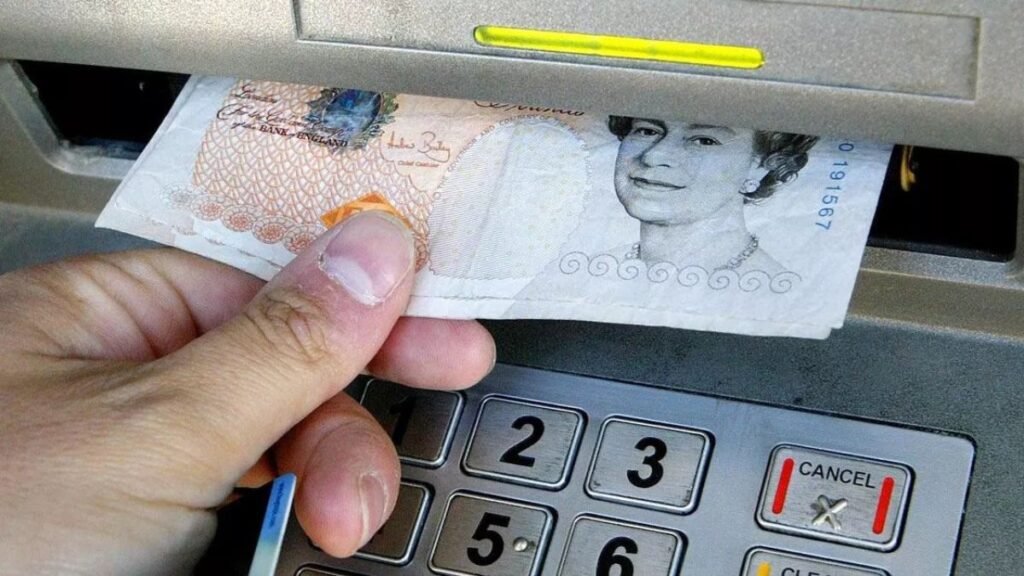The cost of simply living in the UK has gone up — and it’s not just something people are imagining. Rising prices for groceries, energy bills, rent, and other everyday essentials have put real pressure on households across the country. For many, it’s become harder to manage the weekly shop or keep up with gas and electricity payments. And while inflation may not be climbing as fast as it did a year ago, the effects are still being felt deeply.
Thankfully, the UK government is stepping in again to offer some much-needed financial relief. In 2025, the Department for Work and Pensions (DWP) has announced a new round of Cost of Living Payments, aimed at helping low-income and vulnerable households cope with ongoing financial strain. These payments will range from £301 to £500, depending on your circumstances, and the best part is — you don’t need to apply. If you’re eligible, the money is automatically sent straight to your bank account.
Let’s dive into the full details, including payment dates, eligibility, how it works, and what you should do to make sure you receive what you’re entitled to.
What Are the 2025 Cost of Living Payments
The Cost of Living Payments are tax-free, non-repayable financial support payments made by the DWP to eligible households. They’re designed to ease the burden of high living costs, especially for people who already receive means-tested benefits or live on low incomes.
These payments are not new — the government introduced similar payments in 2022, 2023, and 2024. But with prices still high, especially for essentials like food, housing, and energy, the DWP has confirmed that the support will continue in 2025 — this time in three structured phases across the year.
How Much Will You Get and When?

The 2025 payments are spread across three key phases, strategically timed to match seasonal cost spikes and help families when they need it most.
| Payment Phase | Period | Payment Amount | Purpose |
|---|---|---|---|
| Phase 1 | March to May 2025 | £301 | Help after winter bills |
| Phase 2 | July to August 2025 | Up to £200 extra | Support during summer high expenses |
| Phase 3 | October to December 2025 | Completes to £500 | Help with year-end and holiday costs |
Each phase serves a purpose:
- Phase 1 offers a financial boost after the cold winter months when heating bills are high and household debts may have built up.
- Phase 2 provides extra money during summer when families with children often face higher food, travel, and activity expenses while kids are off school.
- Phase 3 rounds off the support with a final payment to help cover the expensive end-of-year period — holidays, gifts, heating, and more.
Altogether, if you qualify for all three phases, you could receive a total of £500 in support payments.
Who Qualifies for These Payments?
Here’s the good news: if you already receive certain government benefits, you probably qualify automatically. There’s no need to apply, no forms to fill, and no interviews to attend. The system identifies eligible households based on benefit records during what’s known as the “assessment window” — a specific period where DWP checks who qualifies.
You may be eligible if you are receiving any of the following:
- Universal Credit
- Pension Credit
- Income Support
- Income-based Jobseeker’s Allowance (JSA)
- Income-related Employment and Support Allowance (ESA)
- Housing Benefit
- Working Tax Credit or Child Tax Credit (in some cases)
The key is to be actively receiving one of these benefits during the qualifying period. If your payments are paused or you’re ineligible during the assessment window, you might miss out.
What About People With Disabilities or Medical Needs?
Some of the most vulnerable people face even greater financial strain, especially if they rely on medical equipment at home or have high care needs. That’s why the government is also providing enhanced support for people with disabilities.
You may receive additional Cost of Living support in 2025 if you are receiving:
- Personal Independence Payment (PIP)
- Disability Living Allowance (DLA)
- Attendance Allowance
These payments recognize that people with disabilities often have extra energy costs — for example, running an oxygen machine, using electric mobility equipment, or heating a home more consistently due to health conditions.
In addition, carers, especially those looking after someone with a serious health condition, may also be prioritized for extra help. The government acknowledges that these households face unique financial pressures and aims to offer support that reflects their real-world challenges.
How Will You Get the Payments?
Once you qualify, the process is simple and automatic. The payments are sent directly to your existing bank account, using the same payment method as your benefits. There’s no need to re-register or verify anything separately — unless something about your circumstances has changed.
But here’s the catch: you need to make sure your information is up to date.
Here’s what you should check:
- Is your bank account still active and correct with DWP or HMRC?
- Has your home address changed recently?
- Are you still receiving the same benefit regularly?
If there’s an error — for example, an outdated bank account or a paused benefit claim — your payment might be delayed or missed altogether. In that case, it’s important to contact the DWP as soon as possible. A quick phone call or online update can resolve most issues before they become serious.
What If You Don’t Receive a Payment?

Mistakes happen, and sometimes payments go missing. If you believe you should have received a Cost of Living Payment but it hasn’t shown up, don’t wait around hoping it’ll fix itself. Contact the DWP helpline immediately and explain the situation.
Common reasons for missed payments include:
- Incorrect or closed bank accounts
- Missed assessment window due to a gap in your benefit
- Your benefit claim being processed late
The DWP can investigate and, if eligible, issue a backdated payment — but only if you bring it to their attention.
Real-World Impact: Why These Payments Matter
According to the Office for National Statistics, as of 2024, nearly one in four UK households struggled to meet basic living expenses. That’s a shocking number. For many people, these Cost of Living Payments are not a luxury — they’re a lifeline.
Let’s look at a few examples of how this money could help:
- A retired pensioner could use the £301 March payment to cover rising heating costs or buy essential medications.
- A single parent on Universal Credit might use the summer top-up to help feed their children during the school holidays, when free school meals aren’t available.
- A disabled individual living alone can use the final £200 to help pay for electricity needed to power life-saving medical devices.
These payments aren’t going to make people rich, but they offer stability, relieve stress, and help prevent families from falling deeper into debt or financial crisis.
Extra Help: More Support Schemes You Should Know About
The DWP’s Cost of Living Payments are just one part of the government’s broader plan. You may also qualify for other schemes that can ease your financial load:
1. Warm Home Discount Scheme
This program offers eligible households up to £150 off their winter electricity bills, usually applied directly to your energy account. It’s particularly useful for pensioners and people on certain benefits.
2. Household Support Fund
Administered by local councils, this fund provides emergency help with food, heating, or clothing. The amounts vary by area, and you often need to apply through your local authority. It’s worth checking if your council offers vouchers or direct payments.
Together with the main Cost of Living Payments, these schemes can stretch your budget further and provide more financial breathing room.
What You Should Do Now
To make sure you don’t miss out:
- Check your benefit status regularly and make sure your claim is active
- Update your contact and banking details with DWP or HMRC if anything changes
- Keep an eye on official announcements about payment windows and deadlines
- Contact DWP immediately if you miss a payment
- Explore other schemes like energy discounts and local council grants
Final Thoughts
The 2025 Cost of Living Payments are not a silver bullet — but they are a powerful tool in helping people stay afloat in tough economic times. With up to £500 in direct support available in three installments, and no application required, it’s a simple yet effective way for the government to offer real help when it’s needed most.
By staying informed, proactive, and aware of your benefit status, you can make the most of what’s available and protect your financial wellbeing — not just survive the crisis, but stay one step ahead of it.
FAQs
Q1. What are the DWP Cost of Living Payments for 2025?
A: The Department for Work and Pensions (DWP) will issue cost of living payments ranging from £301 to £500 in 2025 to help eligible households with rising expenses.
Q2. Who is eligible to receive these payments?
A: People receiving means-tested benefits such as Universal Credit, Pension Credit, Income Support, Jobseeker’s Allowance, or Employment and Support Allowance (ESA) may qualify.
Q3. When will the payments be made?
A: Exact payment dates are yet to be confirmed, but they are expected to be distributed in multiple instalments across 2025.
Q4. Do I need to apply for the payment?
A: No, if you’re eligible, payments will be made automatically to the same bank account where you receive your benefits.
Q5. Can I receive both the £301 and £500 amounts?
A: Most people will receive one of the payments based on their qualifying benefit and timing. The payment amount may vary depending on your circumstances.


